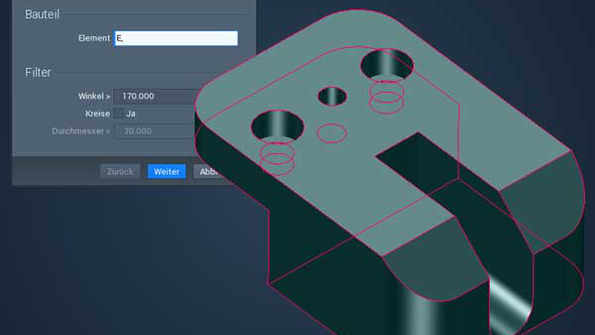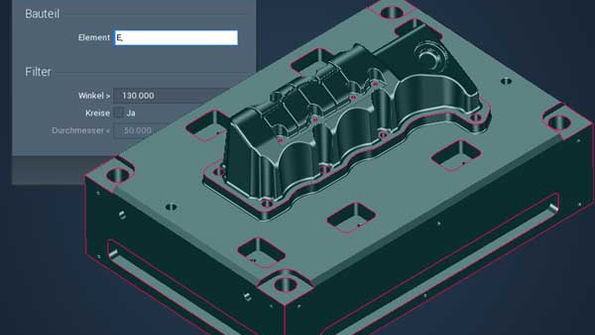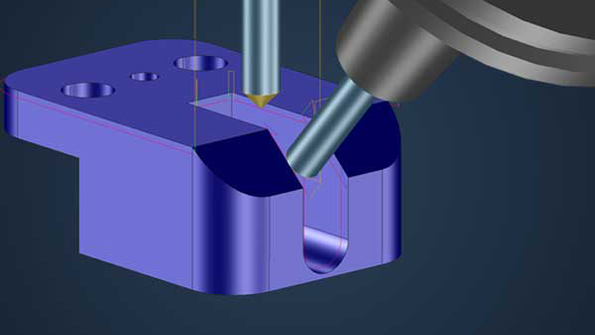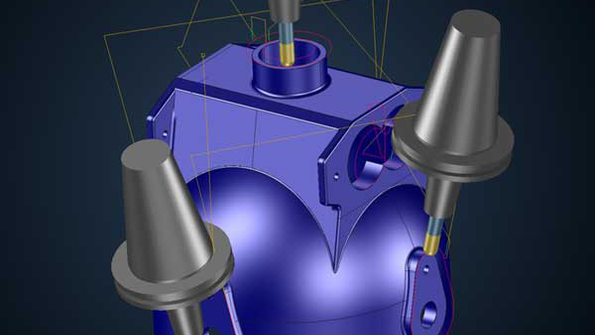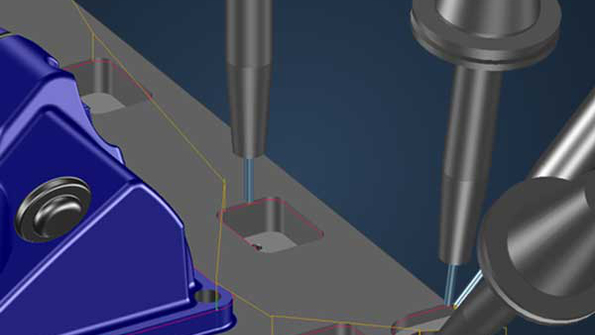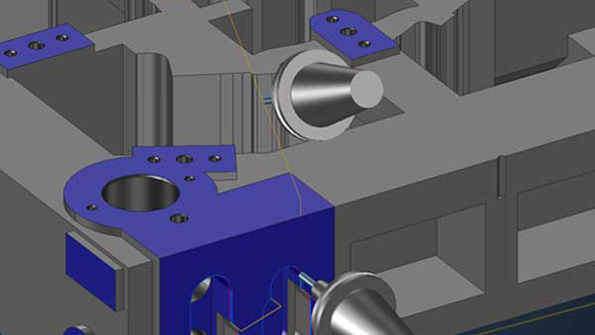Martinsried, Germany, March 12, 2019 – Tebis, the specialist for CAD/CAM and MES process solutions in model, die and mold manufacturing, introduces new functions including automated multi-axis deburring in Release 7 of its CAD/CAM software. This new function is fully integrated in Tebis' template technology; preparation and milling functions are optimally harmonized.
Tebis 4.0 Release 7* is expected to be available in late March.
A plus when it comes to performance
The new Tebis solution for automated multi-axis deburring enables users to greatly reduce manual reworking on the part. This enables them to tap into the capabilities of their machines significantly better. Fabian Jud, Tebis product manager, explains: "Today, many CAD/CAM users still deburr manually. With our solution, which is suitable for machining with ball cutters or tapered cutters, the NC programmer automatically generates the toolpaths in the CAD/CAM software. Deburring is performed by the machine."
Quick and easy part preparation
Thanks to this new function, absolutely no design knowledge is required for preparing the part. The user simply selects the part; all sharp edges are automatically detected and are stored in a structure when the process is complete. This detection can be restricted with filters if desired. For example, bores that are countersunk and should therefore not be deburred until during boring can initially be excluded from processing.
Completely integrated in Tebis template technology
With the new milling function for deburring, the user no longer has to select individual curves or interactively angle the tool. The structured data as well as automatic element selection take care of this. The tool automatically finds the best tilt direction. 5-axis simultaneous avoidance milling is also integrated when using ball cutters.
Broad range of applications
The new solution is suitable for 5-axis simultaneous machining as well as for 3-axis machining with positionable axes. Of course, a fixed tilt direction can also be specified, enabling trouble-free use of machines with multiple heads. The user can perform deburring with either a 3-axis, 5-axis or angle head – only those toolpaths that can be traversed without collisions using the selected head and the selected tilt direction are calculated. 3-axis and 5-axis simultaneous machining operations can therefore be combined to reduce tool movements and traverse paths to a minimum.
This new function can be implemented in a wide range of applications. It is suitable for both deburring prismatic parts from mechanical engineering and the production of mold frames as well as for fast manufacturing of complex parts.
Data:
Number of characters: 3.200
Number of images: 7
Downloads:
automatic_multiaxis_deburring_with_tebis.zip


